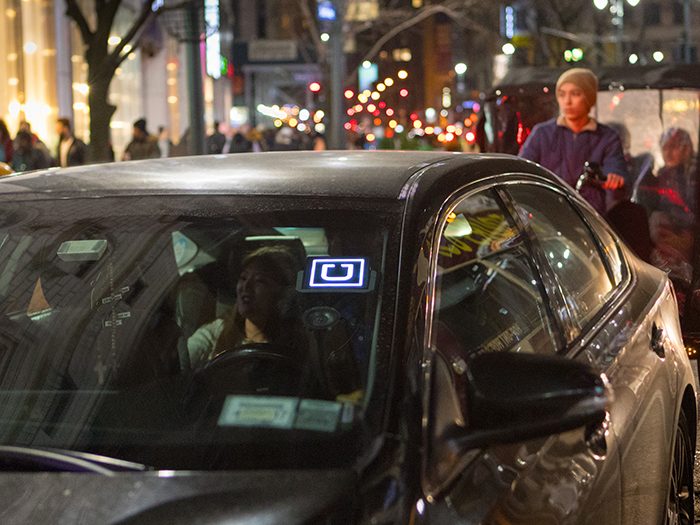Risk Focus: Workers' Comp
Do You Have Employees or Gig Workers?

A growing number of Americans earn their living in the gig economy without employer-provided benefits and protections such as workers’ compensation.
With the proliferation of on-demand services powered by digital platforms, questions surrounding who does and does not actually work in the gig economy continue to vex stakeholders. Courts and legislators are being asked to decide what constitutes an employee and what constitutes an independent contractor, or gig worker.
The issues are how the worker is paid and who controls the work process, said Bobby Bollinger, a North Carolina attorney specializing in workers’ compensation law with a client roster in the trucking industry.
The common law test, he said, the same one the IRS uses, considers “whose tools and whose materials are used. Whether the employer is telling the worker how to do the job on a minute-to-minute basis. Whether the worker is paid by the hour or by the job. Whether he’s free to work for someone else.”
Legal challenges have occurred, starting with lawsuits against transportation network companies (TNCs) like Uber and Lyft. Several court cases in recent years have come down on the side of allowing such companies to continue classifying drivers as independent contractors.
Those decisions are significant for TNCs, because the gig model relies on the lower labor cost of independent contractors. Classification as an employee adds at least 30 percent to labor costs.
The issues lie with how a worker is paid and who controls the work process. — Bobby Bollinger, a North Carolina attorney
However, a March 2018 California Supreme Court ruling in a case involving delivery drivers for Dynamex went the other way. The Dynamex decision places heavy emphasis on whether the worker is performing a core function of the business.
Under the Dynamex court’s standard, an electrician called to fix a wiring problem at an Uber office would be considered a general contractor. But a driver providing rides to customers would be part of the company’s central mission and therefore an employee.
Despite the California ruling, a Philadelphia court a month later declined to follow suit, ruling that Uber’s limousine drivers are independent contractors, not employees. So a definitive answer remains elusive.
A Legislative Movement
Misclassification of workers as independent contractors introduces risks to both employers and workers, said Matt Zender, vice president, workers’ compensation product manager, AmTrust.
“My concern is for individuals who believe they’re covered under workers’ compensation, have an injury, try to file a claim and find they’re not covered.”
Misclassifying workers opens a “Pandora’s box” for employers, said Richard R. Meneghello, partner, Fisher Phillips.
Issues include tax liabilities, claims for minimum wage and overtime violations, workers’ comp benefits, civil labor law rights and wrongful termination suits.
The motive for companies seeking the contractor definition is clear: They don’t have to pay for benefits, said Meneghello. “But from a legal perspective, it’s not so easy to turn the workforce into contractors.”
It’s about to get easier, however. In 2016, Handy — which is being sued in five states for misclassification of workers — drafted a N.Y. bill to establish a program where gig-economy companies would pay 2.5 percent of workers’ income into individual health savings accounts, yet would classify them as independent contractors.
Unions and worker advocacy groups argue the program would rob workers of rights and protections. So Handy moved on to eight other states where it would be more likely to win.
So far, the Handy bills have passed one house of the legislature in Georgia and Colorado; passed both houses in Iowa and Tennessee; and been signed into law in Kentucky, Utah and Indiana. A similar bill was also introduced in Alabama.
The bills’ language says all workers who find jobs through a website or mobile app are independent contractors, as long as the company running the digital platform does not control schedules, prohibit them from working elsewhere and meets other criteria. Two bills exclude transportation network companies such as Uber.
These laws could have far-reaching consequences. Traditional service companies will struggle to compete with start-ups paying minimal labor costs.
“My concern is for individuals who believe they’re covered under workers’ compensation, have an injury, try to file a claim and find they’re not covered in the eyes of the state.” — Matt Zender, vice president, workers’ compensation product manager, AmTrust
Opponents warn that the Handy bills are so broad that a service company need only launch an app for customers to contract services, and they’d be free to re-classify their employees as independent contractors — leaving workers without social security, health insurance or the protections of unemployment insurance or workers’ comp.
That could destabilize social safety nets as well as shrink available workers’ comp premiums.
A New Classification
Independent contractors need to buy their own insurance, including workers’ compensation. But many don’t, said Hart Brown, executive vice president, COO, Firestorm. They may not realize that in the case of an accident, their personal car and health insurance won’t engage, Brown said.
Workers’ compensation for gig workers can be hard to find. Some state-sponsored funds provide self-employed contractors’ coverage. Policies can be expensive though in some high-risk occupations, such as roofing, said Bollinger.
The gig system, where a worker does several different jobs for several different companies, breaks down without portable benefits, said Brown. Portable benefits would follow workers from one workplace engagement to another.
What a portable benefits program would look like is unclear, he said, but some combination of employers, independent contractors and intermediaries (such as a digital platform business or staffing agency) would contribute to the program based on a percentage of each transaction.
There is movement toward portable benefits legislation. The Aspen Institute proposed portable benefits where companies contribute to workers’ benefits based on how much an employee works for them. Uber and SEI together proposed a portable benefits bill to the Washington State Legislature.
Senator Mark Warner (D. VA) introduced the Portable Benefits for Independent Workers Pilot Program Act for the study of portable benefits, and Congresswoman Suzan DelBene (D. WA) introduced a House companion bill.
Meneghello is skeptical of portable benefits as a long-term solution. “They’re a good first step,” he said, “but they paper over the problem. We need a new category of workers.”
A portable benefits model would open opportunities for the growing Insurtech market. Brad Smith, CEO, Intuit, estimates the gig economy to be about 34 percent of the workforce in 2018, growing to 43 percent by 2020.
The insurance industry reinvented itself from a risk transfer mechanism to a risk management mechanism, Brown said, and now it’s reinventing itself again as risk educator to a new hybrid market. &











